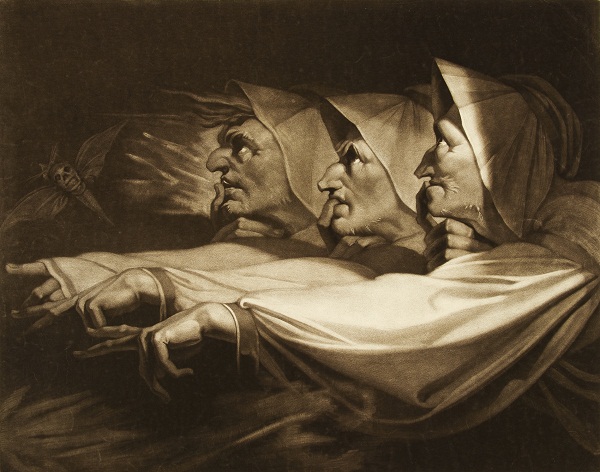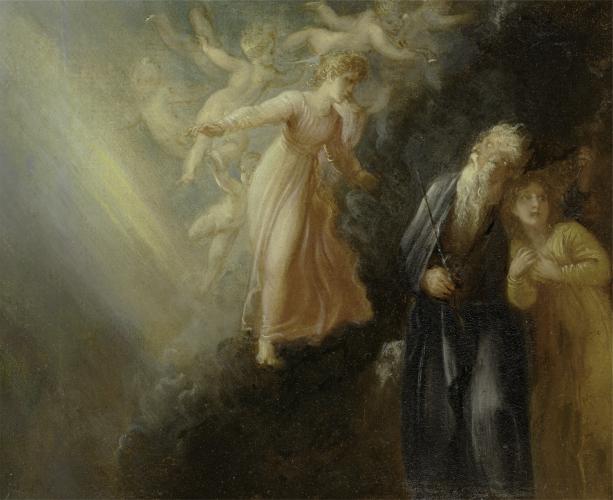
I do not bid the thunder-bearer shoot,
Nor tell tales of thee to high-judging Jove;
Mend when thou canst; be better at thy leisure.
-William Shakespeare, King Lear, Act 2 Scene 4
A year ago, as everyone was looking for some touchstone to make sense of the coronavirus pandemic, some of us turned to Shakespeare. He made sense as a model for our moment: Shakespeare also lived at a time of pestilence, and his career was shaped by its own sorts of lockdowns and distancing. He lived through an outbreak of the bubonic plague the year of his birth that claimed the lives of two siblings; another swept through London just before he wrote Romeo and Juliet; two more waves ripped through England before his career ended, claiming the lives of tens of thousands of his fellow citizens.
“These plays really bear the mark of living through such a terrible experience,” Columbia University professor James Shapiro told WBUR in April 2020. “And it may well be that his move toward writing tragedy at this time is a kind of response to the tragedy that his society was experiencing in these years.”

The Weird Sisters from Shakespeare’s ‘Macbeth’ After Henry Fuseli (1741-1825); mezzotint by John Raphael Smith (1751-1812)
In the dark of last winter, when the coronavirus was at its peak in the United States and the vaccine was nowhere in sight, I also found myself turning to Shakespeare for comfort. My coven had not been able to meet for a sabbat or esbat since Lughnasadh, and my wife and I canceled holiday plans with our parents. I had days where my mood was so black that I could not see the point in getting out of bed.
I reached out to friends from around the country and invited them to spend Boxing Day with me on Zoom, reading Macbeth together. (I think Macbeth is the best starting point for any reading group like this – everybody knows it, but usually not as well as they think, and its length is more reasonable than any of the other tragedies. Besides, the Weird Sisters are a hoot.)
We kept it simple and casual – we did not rehearse or attempt to make a “production” out of it, we just assigned roles and read through the play together – but we enjoyed it so much that we have continued reading plays together. Someone in our group organizes a reading once a month or so. While we had one foray into Chekhov, we have mostly stayed with Shakespeare. The ex-literature teacher in me feels a little remorseful about this: Shakespeare is the deadest and whitest of the great list of Dead White Dudes in English literature. But we love him for a reason, and, well, there are many reasons why a white reader should appreciate August Wilson’s plays in silence.
While I was reading up on The Tempest for the group, I found myself strolling down a path of Wikipedia pages, starting with the play and the main page for Shakespeare himself and then amusing myself with the variations on the Oxfordian theory (that is, the theory that Shakespeare was merely a front man for some secret “true author,” which is the only academic conspiracy theory I know of to have been made into a major motion picture.) While I mostly found myself laughing at the Oxfordians, some of the speculations there led me to a page about Shakespeare’s religious views, some of which referenced material I had read or taught before I left the academy.

Thomas Stothard, Prospero, “Miranda, and Ariel, from ‘The Tempest,’ Act I, Scene ii,” ca. 1799, oil on paper laid on canvas, Yale Center for British Art, Paul Mellon Fund [public domain]
Shakespeare lived, famously, in the time when the Anglican Church was still a new and fragile institution, and there is a wealth of speculation that he had family members who were secretly Catholic, or even that he was Catholic himself. As the most scrupulously analyzed author in the language, Shakespeare’s words have been mined for any hint of such persuasion, from the overt presence of Catholic characters like Friar Laurence in Romeo and Juliet to the exact details of Purgatory and the afterlife as they pertain to King Hamlet. Shakespeare’s biography has likewise been excavated for clues to any hidden Catholicism.
Scroll a bit further down the page, though, to the heading for “paganism,” and there is only this:
Shakespeare’s very frequent references to Paganistic gods and concepts, such as Hymen bringing about the resolution of As You Like It, are not a reflection of his own belief but a necessary device to present deity on stage, where Christian figures were, in contrast to the presentation of the mystery plays of earlier times, prohibited. Some commonplace Christian allusions, involving no physical manifestation of religion, in Quarto editions of the history cycle, were replaced with harmless references to pagan gods when the First Folio appeared.
For what it is worth, I think this is more or less likely to be correct. Shakespeare was certainly not “pagan” in any way that we would recognize in ourselves, even in some prototypical form, and the gods and spirits he invokes in his plays were probably only literary figures to him. But it struck me, reading the passage, how summarily the idea that Shakespeare might have had some sincere religious feelings toward the entities he so often invoked is dismissed. The fact that Prince Hamlet attended the university at Wittenburg is cause for speculation of a Catholic worldview; that Jove is invoked in all but three of the comedies and all but two of the tragedies is “harmless reference.” I find it telling, what we deem worthy of such speculation and what we do not.
Regardless, Shakespeare has been a part of my Paganism for as long as I can remember, a constant source of reference and inspiration – especially at this time of year, when many a Pagan’s fancy turns to A Midsummer Night’s Dream. (We’ve all done that ritual at some point, yes?) I think of all those references to Jove and Minerva, and to the masque of Juno, Iris, and Ceres in The Tempest, and all the ways that Midsummer has affected the ways we think about faeries – not to mention how The Tempest provides the central metaphor for Silvia Federici’s Caliban and the Witch, which nearly every Witch I admire cites as a revelation.
I don’t think it’s much of a stretch to say that modern Paganism, certainly in the Wiccan traditions that spurred the rest of the revival, would look anything like they do today without these depictions. For that reason, I’m glad to have had the Bard with me all these years, and especially during this past one.
The Wild Hunt is not responsible for links to external content.
To join a conversation on this post:
Visit our The Wild Hunt subreddit! Point your favorite browser to https://www.reddit.com/r/The_Wild_Hunt_News/, then click “JOIN”. Make sure to click the bell, too, to be notified of new articles posted to our subreddit.
